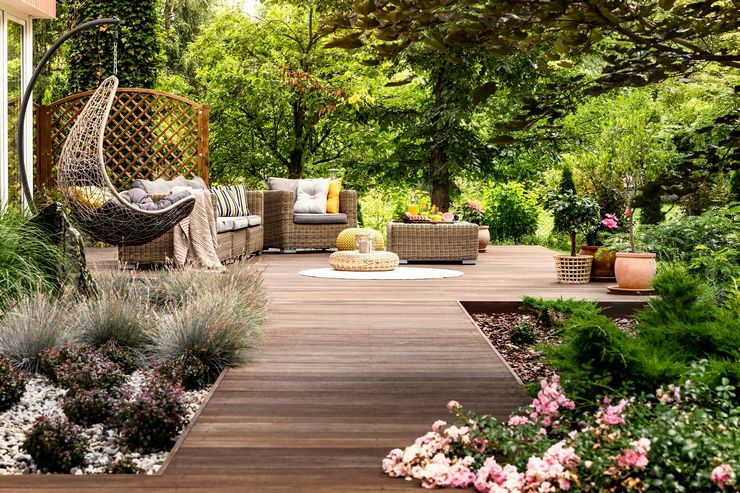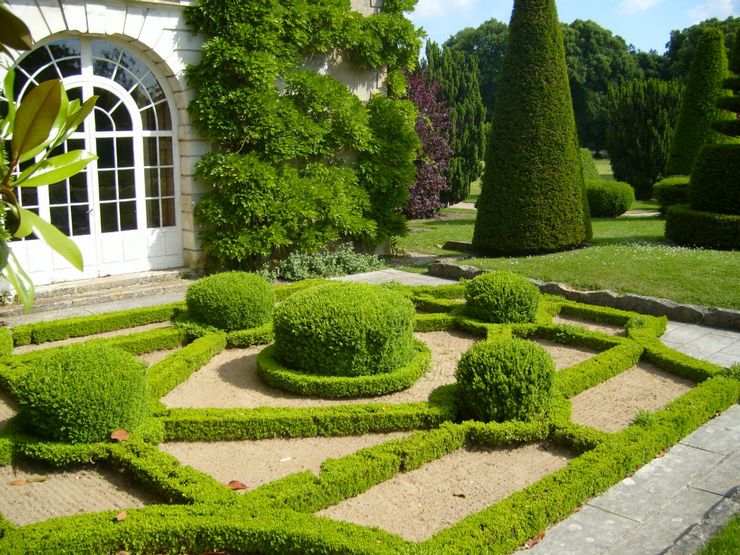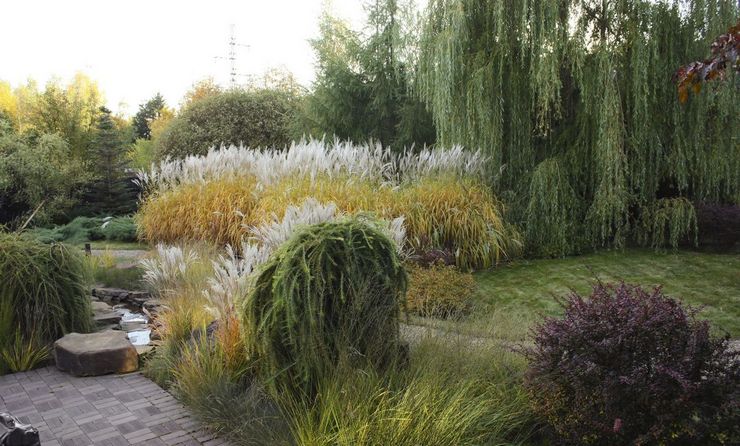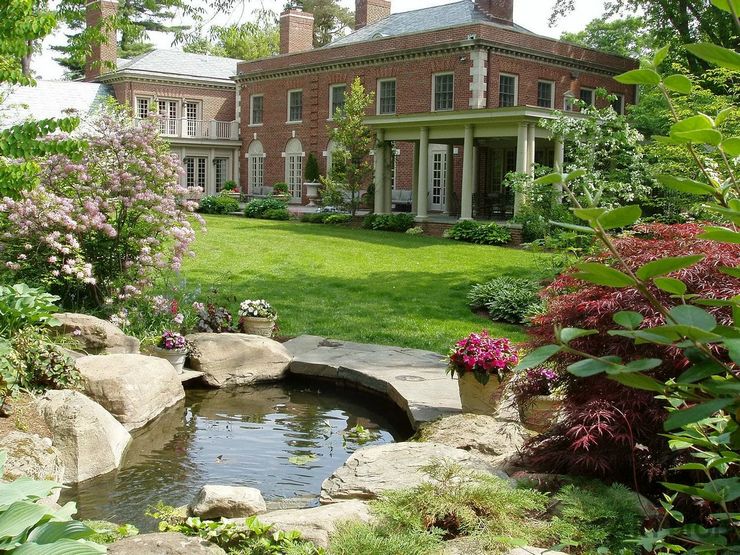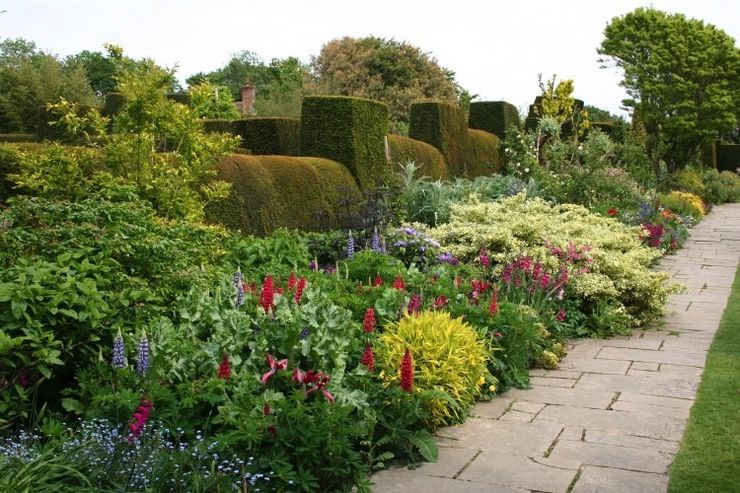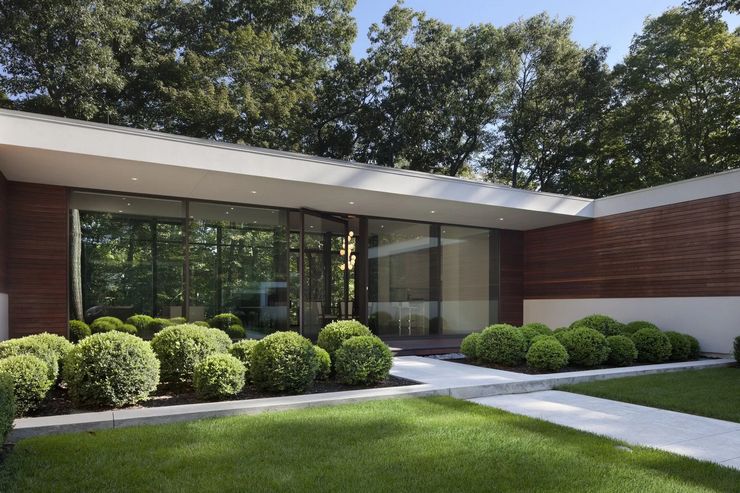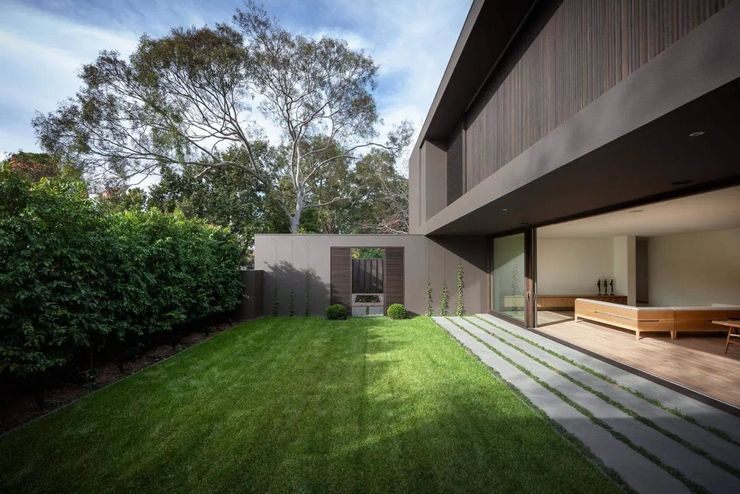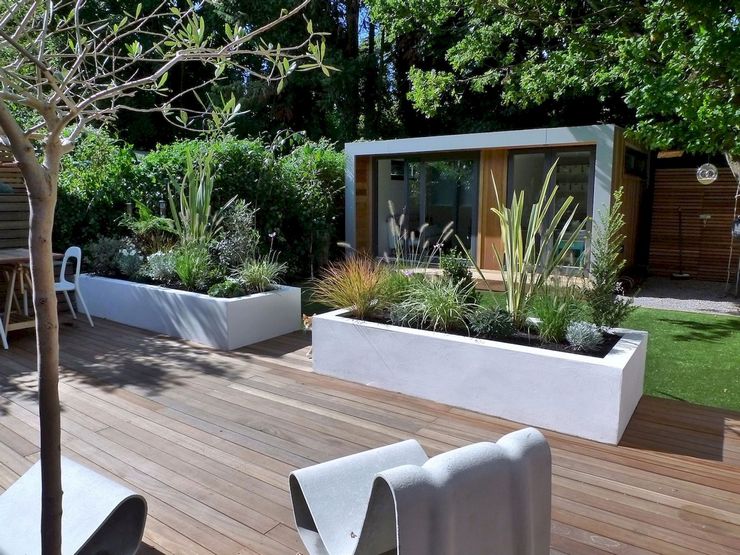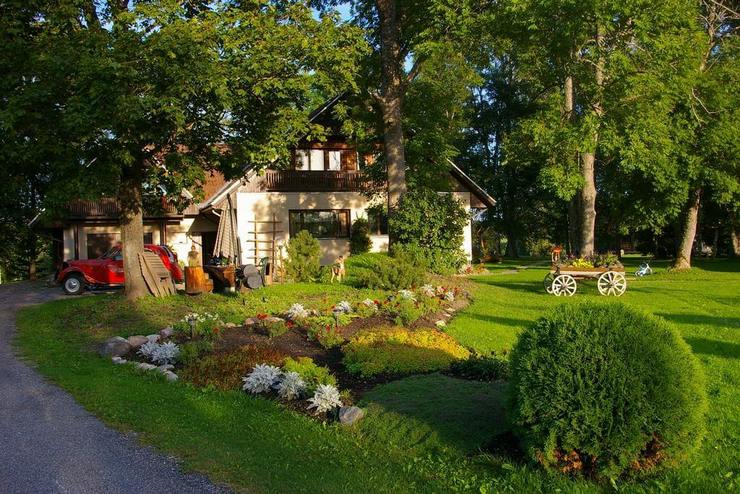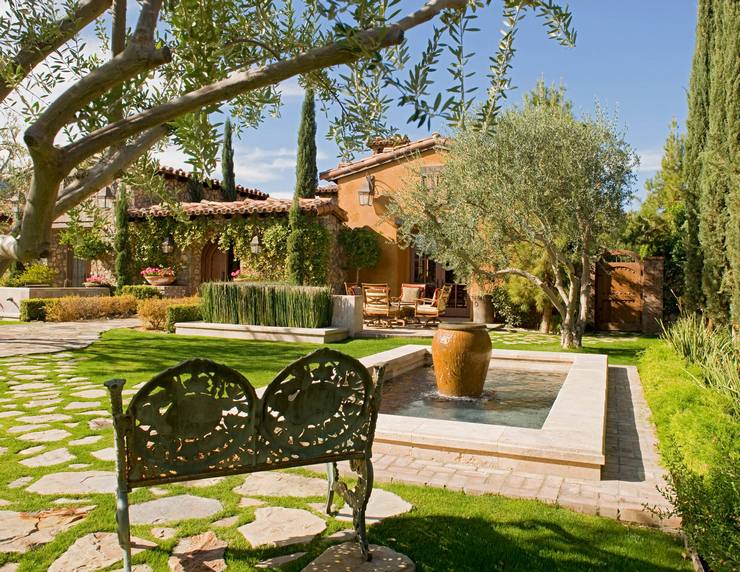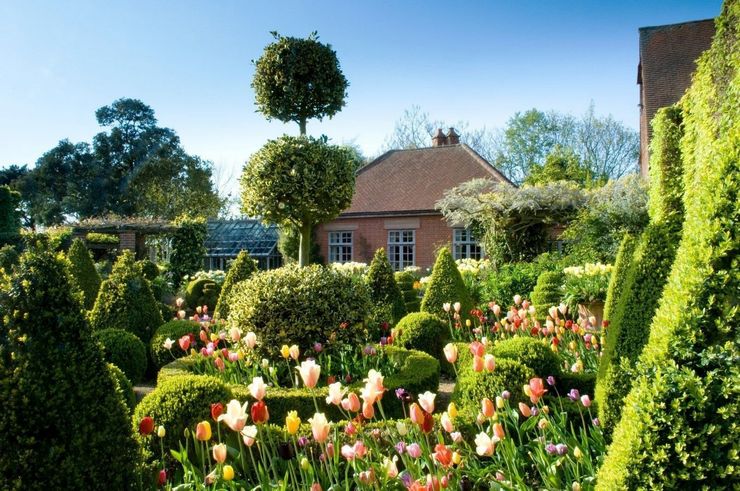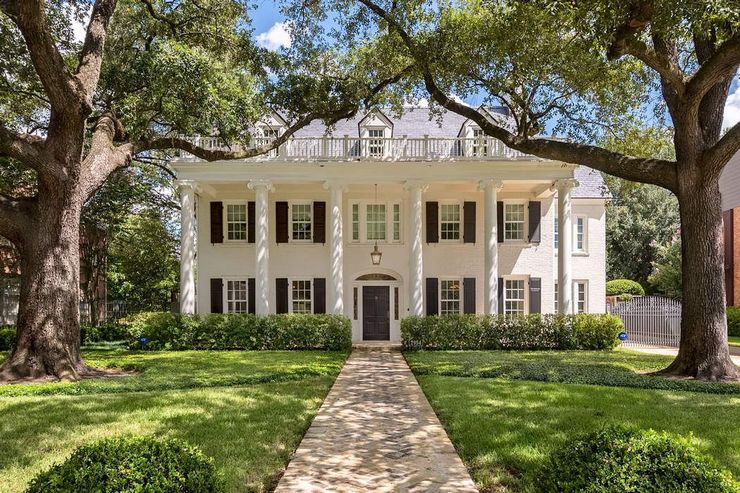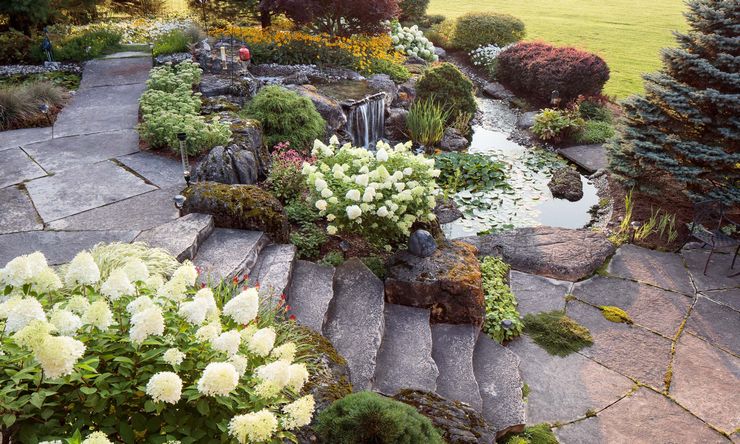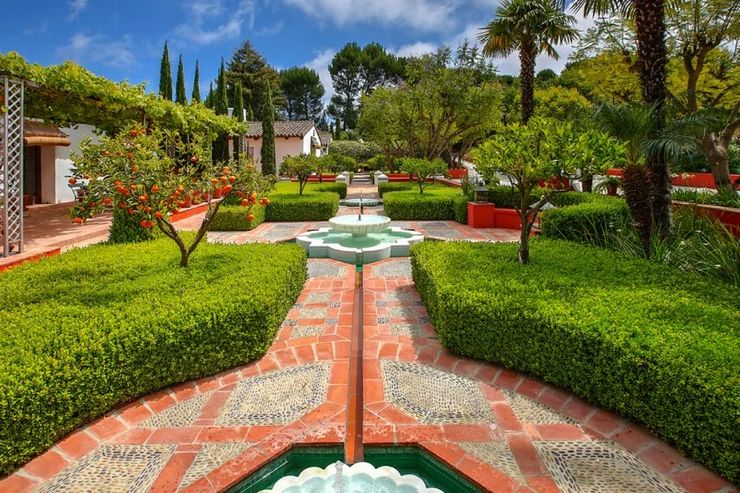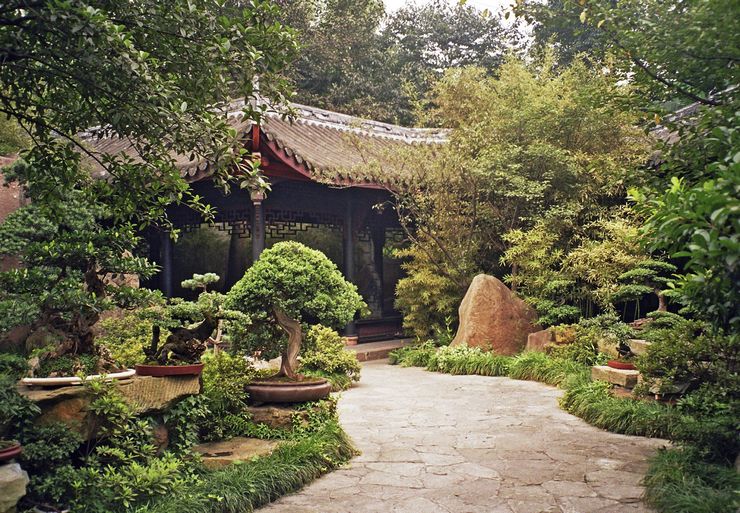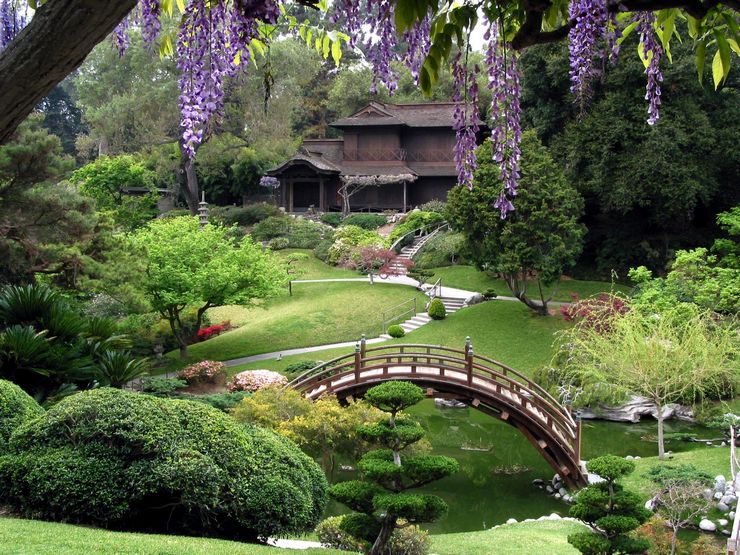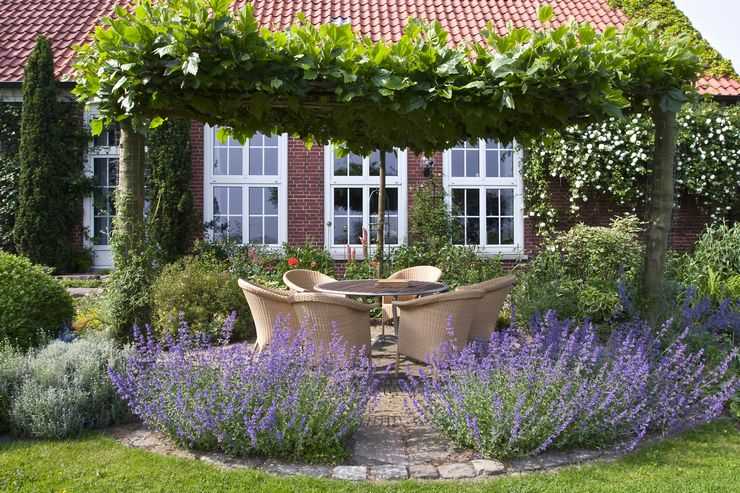The main task of landscape design is the design of the site, which makes it possible to give it a harmonious and attractive appearance. But this result can be achieved in different ways. The correct choice of landscape design style allows you to emphasize all the advantages of the site and create a garden that is best suited for a particular place.
Garden design has many different directions, some of which are considered the most popular and have not lost their popularity for many years. Each landscape style has a number of distinctive features and subtleties of creation.
Classic (or French, regular) style
One of the most popular landscaping styles. Its best example is the territory of the palace and park complexes of Europe, which is why this style looks most organic on large and spacious areas. The garden, decorated according to his rules, is distinguished by the rigor and clarity of lines, as well as refined laconicism. Among its main characteristics:
- Symmetry. The places where the paths pass, as well as the design of the flower beds, obey the laws of symmetry. Shrubs are cut in one line, and flowers of the same height are planted on flower beds.
- The presence of the central points of the composition. In this capacity, a house, garden structures and small architectural forms – fountains, sculptures, gazebos.
- Flowers in flower beds usually form a geometric pattern. To create such flower beds, low plants of friendly and long flowering are used..
- For ease of maintaining a neat appearance, shrubs and trees in such a garden are systematically trimmed. Therefore, for landscaping, species are used that easily tolerate haircut and shaping. Topiary is also characteristic of the style – figuratively trimmed plants..
- Fruit trees and shrubs can also be found in the garden. Tall trees are most often framed by paths.
The classic style allows you to add an area of solemnity, but will require constant maintenance..
Eco-style (or naturgarden)
For site owners who are trying to merge with nature as much as possible, the eco-style of landscape design is suitable. It attracts with low costs for arrangement and can be implemented in territories with different reliefs. The house must also meet the style requirements: its facade can only include wood, stone or metal. As a last resort, walls can be masked with vertical landscaping..
The main idea of eco-style is to achieve harmony with the surrounding nature and a careful imitation of the natural landscape:
- Local plant species are selected for planting.
- The compositions are based on large trees, which most often are not fruit trees..
- The presence of a reservoir is desirable – real or artificial. Such measures will expand the ecosystem of the garden. But even a homemade pond should feel real.
- The functional elements of the garden (benches, gazebos) are made of natural materials or use natural components as such: logs, hemp.
- Tracks can be made of stone or cuts.
- Free-form green hedges will allow zoning the site.
Without living beings, such a garden will not be considered complete. Fish can swim or frogs live in the pond, houses for birds or beneficial insects are welcome.
Landscape (or English) style
The English style also differs significantly from the orderly French. The garden, made according to his rules, has a slight freedom and negligence, which allows you to competently combine the work of a gardener with the riot of wildlife. To create a complete composition, you will need a medium-sized area with a flat or hilly relief..
- All lines of the garden are smooth and soft. Green spaces imperceptibly “flow” into each other, paths winding, and reservoirs have uneven banks.
- Only natural materials are used to decorate houses, buildings and decorative elements..
- Exotic plants are practically absent, preference is given to local flowers and shrubs. A part of the territory can be occupied by a lawn of field grasses.
- Shrubs and trees are trimmed only occasionally, if necessary. Correct crown shapes are not considered mandatory here, and even the garden itself should appear slightly overgrown..
To be even more comfortable in such a garden, places for relaxation are sure to be installed in it, adding romance to the landscape. It can be wrought iron benches or carved gazebos..
Mixed style
Mixed style will allow to embody several landscape directions at once on one site. In this case, the garden is divided into several parts and each of them is decorated in its own way. This approach attracts with its originality and freedom of choice of plants and decorative components. Another plus is the ability to implement a project on a site of any size and relief..
- To create such combinations, the easiest way is to choose styles that are somewhat similar to each other..
- One main style is usually taken as a basis, mixing elements of other directions with it..
- Sometimes a combination of opposite solutions can also look very impressive. For example, a neglected French garden of strict forms sometimes seems even more romantic than a well-groomed one. But for complex experiments in combination, you need to have taste and a sense of proportion, otherwise the garden area will look chaotic or too scattered..
If you mix different styles correctly, you will be able to create a whole picture of mini-gardens flowing into each other..
High tech
High-tech landscape design is characterized by laconicism and unusual solutions. It often uses exotic plant species with a beautiful and clear crown: palms in tubs, conifers in the form of pyramids or triangles. It is not necessary to observe symmetry when placing them. Hi-tech attracts with the fact that it can be created literally on any site.
- Modern materials prevail in the decoration of houses and buildings: plastic, metal, synthetic compounds, as well as plexiglass..
- Most of the plants are planted in minimalistic flowerpots and containers. Landings can be shaped to give them more strict lines. The tracks are also clearly defined. They are paved or covered with stones.
- Flowering species here are often replaced or supplemented with cereals, succulents.
- Reservoirs on the site are framed with concrete or metal structures. Fountains are often geometric..
- There is almost no zoning in the garden. If necessary, gabions or hedges will help to divide parts of a large garden..
- Backlight plays a special role. It is she who sets the mood for the garden and helps to place accents. Flower beds, fountains, sculptures or paths can be highlighted.
- Free areas are filled with an even lawn.
The resulting garden should combine style and practicality..
Minimalism
A garden in which there is nothing superfluous attracts people who do not have the opportunity to take care of plants for a long time and maintain its visual appeal. Minimalism in landscape design also does not impose requirements on the size of the site, and is also well suited for areas with pronounced zoning.
- There is almost no garden decor on such a site. It is replaced by boulders or logs, you can use laconic statues or functional elements – for example, lamps.
- Zoning is provided by low gabions, transitions with steps, as well as green spaces.
- The number of outbuildings and garden architecture is minimal.
- The paths of such a garden are even and straight. The garden may contain a small well-shaped body of water.
- Natural materials can be combined with artificial.
- Freedom to choose plants: literally any species can be used, but in limited quantities. Landings with a beautiful crown of a pronounced shape are preferred. Root plots mulch.
- Monoclumbas are made of flowers. Free spaces are filled with lawn, which is carefully looked after.
In general, restrained colors are preferred in the design of such a garden. It will not be difficult to take care of such a site. The main difficulty here is to initially create a landscape that will look finished..
Modern style
Elegant Art Nouveau is considered one of the most expensive landscape styles. This style allows you to embody fantasies, and takes smooth natural lines as a basis. The result should be a little restrained, but highly artistic..
- Architectural forms are of great importance in such a garden, as well as repeating patterned design elements..
- Almost all lines on the site have bends, right angles are avoided.
- Garden paths radiate from the house, forming a semblance of the sun.
- The number of landings is small, but they are all correctly positioned and carefully selected. Evergreen and exotic species preferred.
- Plants are made up of groups with a central element – the largest, most noticeable or striking planting. The flower beds are often framed with beautiful fences. One of the most characteristic flowers of this garden is iris..
- The garden’s palette is dominated by shades of brown, purple, red and yellow-green. When choosing shades, you can play on contrasts. A combination of different shapes and textures will also look good. For example, a metal sculpture can look especially interesting against the background of a stone path and a lawn..
Decorative components in a modern garden can combine beauty and practicality. So an elegant bench with an intricate pattern can serve as a decoration of a place for rest..
Country style (or rustic)
The rustic style is suitable for those who feel great in the countryside, in the country, with a small vegetable garden, a well and other elements of village life. When creating a country style, it is necessary to use natural stone on the site for the construction of paths, handmade wattle, artificial bird nests. One of the important decorative elements can be a small plot of land on which medicinal herbs or fruit trees and shrubs grow. This style promotes a sense of complete peace and relaxation..
Mediterranean (Italian) style
The Italian style allows you to create a bright and lush green garden, but to implement it, you will need heat-loving plants. That is why this direction is considered the most suitable for residents of southern regions with a mild and humid climate..
- Such a garden is well suited for areas with difficult terrain..
- Terraces and garden paths are paved with tiles or stones. Garden furniture can be wicker, wood or wrought iron.
- Some of the most characteristic plants of this style are citrus and olive trees, as well as numerous conifers. To do this, select specimens with a neat crown or species that are resistant to haircuts..
- Garden arches and gazebos can be entwined with climbing plants.
- Lush vegetation will perfectly emphasize a garden pond: a pool or an elegant fountain.
- Sculptures, garden figurines and large clay vessels will additionally help to decorate the garden. You can also plant flowers in them..
If you wish, you can create a corner of the Mediterranean even in the northern regions. To do this, you need to try to find a similar in appearance, but cold-resistant alternative to plants that are not able to overwinter in the garden, or use container plantings.
Dutch style
The old Dutch style is suitable for both large and small areas. In this case, the garden is divided into conditional zones, each of which can be decorated in its own way. In this way, the style resembles a mixed one, but at the same time it has its own features..
- The zoning element is a hedge.
- The paths are paved with natural stone. They have a straight or diagonal direction and converge towards the entrance.
- There are no sharp transitions in the garden, and residential or auxiliary buildings can be lost against the background of plants. Vertical gardening is often used.
- All plantings in the garden must be well-groomed. Large trees are present in small numbers. Fruit plants are grown on trellises.
- Bulbous flowers, characteristic of the Dutch, prevail among the flowers. Despite the abundance of flowering plants, green is considered the main color of the garden..
- As a garden decor, you can use unusual containers for planting flowers from scrap materials, as well as small figurines or sculptures.
This garden combines beauty, neatness and moderation, and also assumes the most rational use of free space..
Colonial style
This American style refers to the days of the colonists. The features of European gardens and buildings here are intertwined with the peculiarities of the landscape of the new lands that they developed. For such a site, the most typical are:
- Eclecticism. Local plants here can coexist with exotic ones, but the main part of the garden is occupied by unpretentious species..
- The garden is quite well maintained but a little sloppy. Most often it is located behind the house..
- Many plants are not planted in beds or flower beds, but in pots or containers. In addition to the garden, there is also a vegetable garden on the site with vegetables and herbs..
- Natural and solid materials prevail. As in other styles based on the natural component, it is recommended to avoid plastic here..
- Garden decor shouldn’t be too fancy. It can be simple and cute figurines, similar to antique statues, or functional decorations – lanterns, beautiful benches and gazebos..
The colonial garden is more for work or play than for admiring from the outside, but this does not make it less attractive..
Alpine style (or park chalet)
Alpine style of landscape design involves the creation of a cozy “Swiss” corner. The easiest way to implement this style is in an area with difficult terrain, but flat terrain is also suitable..
- The most recognizable feature of the style is the multitude of stones. Rockeries and rockeries will serve as the main highlights of the garden.
- Greens are present in moderation, accentuating and shading stones. Among the plants, miniature conifers and ground covers are widely used..
- A house built in a chalet style will help to finally form the necessary picture..
- The boundaries of the garden zones are blurred, they are conventionally designated by stones or plants, there are no clear lines.
- A real body of water can be replaced with an imitation of pebbles – a dry pond or a stream.
- In places that offer the best view of the entire garden, gazebos or benches are installed.
In this style, natural beauty is combined with economy, so the maintenance of such a garden will be minimal. The usual decor (figures and other decorations) is absent here, emphasizing non-interference in the created landscape.
Moorish style
The Moorish-style garden plot is a place of calm and relaxation, tranquility and serenity. Water splashes in the fountain sparkling in the rays of the sun, fragrance and a varied palette of colors of numerous flowering plants, decorative elements – all this turns an ordinary garden into a Moorish fairy tale. In it, you forget about all the hardships and troubles, about household problems and worries, and worries and anxieties simply disappear. Here you seem to plunge into another world, into another life.
The main and central element of this style is the reservoir, from which there are paths decorated with stone and tiles of white or yellow shades. Most of the garden area is covered with perennial, brightly flowering herbaceous plants and shrubs that bloom one after another throughout the warm season. Plants with different flowering periods create a sense of constant celebration, which is fueled by their varied aroma..
The walls of buildings and hedges in the garden area are decorated with plants with multi-colored flowers creeping along them. In the Moorish garden, there is certainly a fountain, a pool, a rose garden and, as a special decoration, a mosaic. It is used to decorate the boundaries of reservoirs and most of the paths. The color scheme consists of soft and restrained tones and midtones, as well as several soft shades. The rose garden and the pool are two inseparable elements of this style. Specially selected varieties of roses with an attractive color and fragrant aroma are planted near the pool raised above the garden level. The finishing touch to this fabulous resting place will be sofas placed throughout the garden area..
Chinese style
The Chinese style in landscape design implies the complete unity of man and nature. It should not have sharp outlines, sharp corners and straight lines. All elements imply unification and complete harmony, therefore, only curved shapes should be present that do not cause irritation..
The Chinese garden is based on the philosophy of feng shui, so each of its components carries a special meaning. The site here acts as a mini-picture of the world.
- An obligatory component of such a garden is reservoirs. Moreover, in one the water should be calm, and in the other – flowing..
- The garden contains many stones, which are complemented by plants. Flowers are only present in small quantities.
- A rectangular gate is installed at the entrance to the garden. For internal zoning are walls with special openings – “moon gates” or windows.
- Furniture is installed only in covered gazebos.
Garden structures with characteristic curved roofs and decorative lanterns will help to emphasize the Chinese style..
Japanese style
The Japanese style is very popular with professional landscape designers. It harmoniously combines natural stone, decorative structures and elements, water structures and a variety of flora. The Japanese treat trees, mountains and waterfalls with respect and reverence. This is reflected in the Japanese garden, where you can see stone paths or benches with wooden seats, small bridges over a murmuring or dry stream, or a stone bowl – a fountain. An obligatory part of the garden are Japanese lamps, bamboo fences, and large stones. All objects are arranged asymmetrically, but together they look like a complete composition. One of the secrets of Japanese style is the use of only natural elements..
How to choose a style of landscape design
When deciding on a landscape style for a garden plot, there are many details to consider. First of all, you need to be guided by your tastes, but in addition to this, you should consider:
- Features of the location of the site, its area and relief, the level of illumination and the nature of the soil.
- Requirements of plants characteristic of the chosen landscape style: whether they can develop normally in conditions such as they will overwinter?
- Household interests. Not everyone may like the composition of stones, the lack of a vegetable garden or the abundance of tubs with tropical plants. The garden should make everyone happy.
- The amount of time and effort that will require caring for the resulting garden, as well as the cost of its creation.
- How exactly the chosen style and garden plan will affect the ease of movement around the site.
By comparing all the arguments, you can create a truly cozy and beautiful garden in any style you like or their combination..

